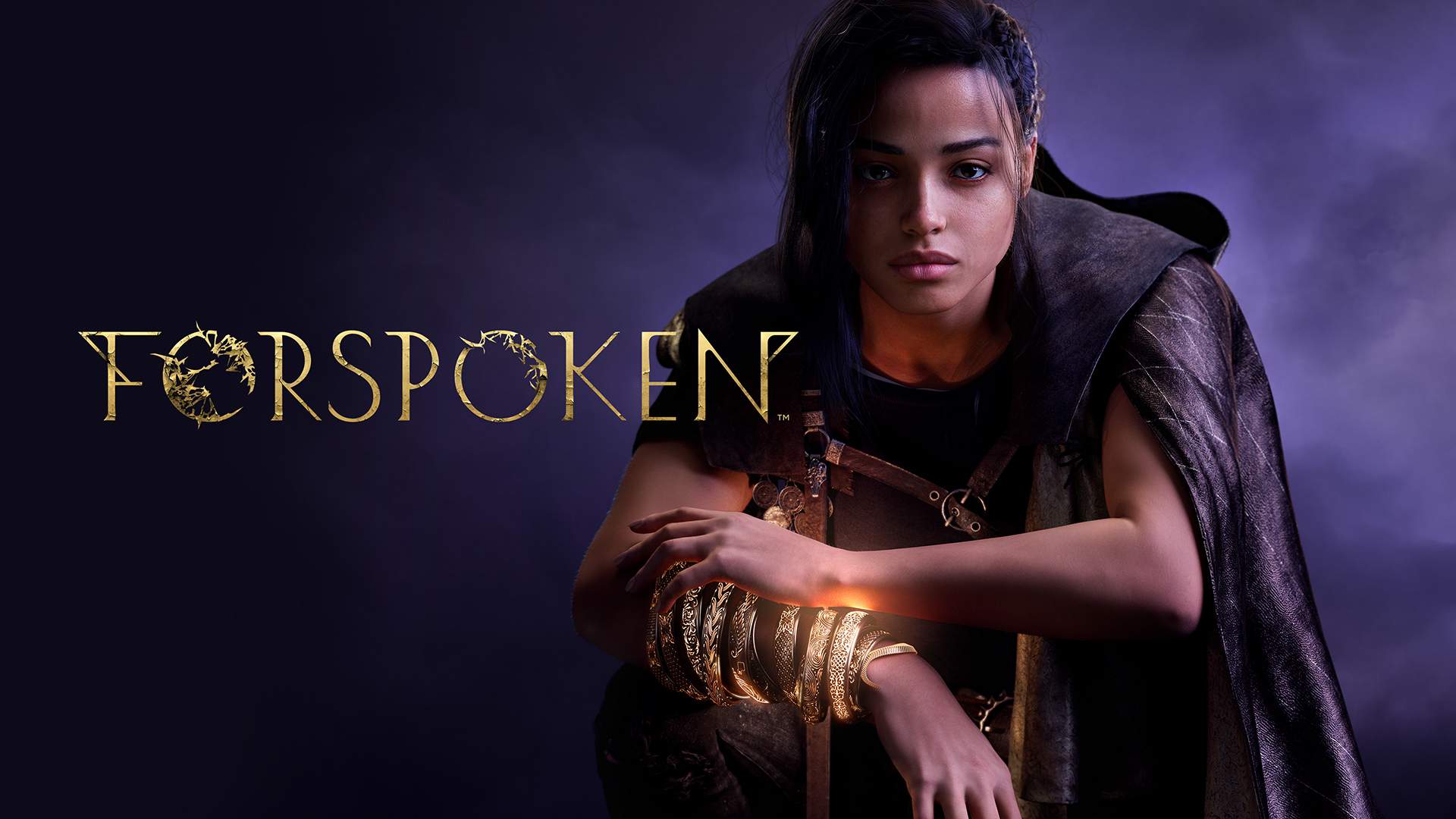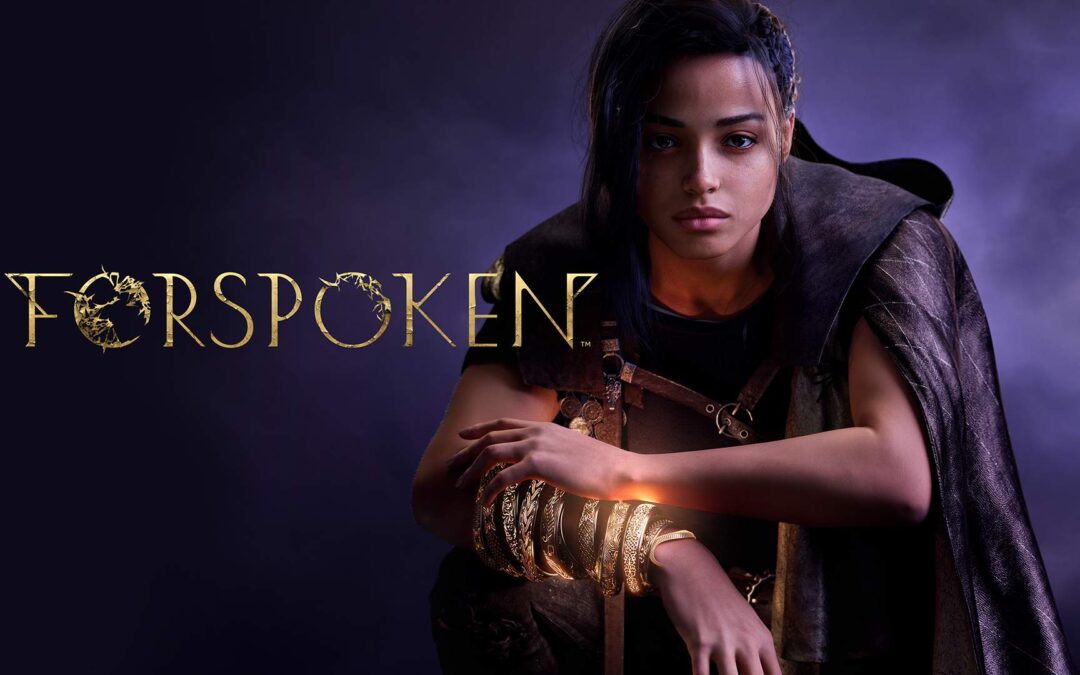
Forspoken is a brand-new, action role-playing game featuring Frey Holland, a young female protagonist trapped in the land of Athia who must use her newfound magical abilities to find her way home. The game is full of likable characters, but it also contains a distracting number of flaws.
[Link to CNN, here.]
Frey Holland, a young New Yorker, finds herself bonded to a chatty armband she names “Cuff” and is transported to Athia, a world in desperate need of saving. It seems that a corruption — which Frey calls “the Break” — has turned everything it touches into zombie versions of themselves — humans, birds, and even goats and deer. The last of humanity is confined to one city, awaiting their terrible fate.
Thanks to Cuff, Frey has the ability to use magic, and, for unknown reasons, she’s unaffected by the Break. But as an orphan with an innate suspicion of anyone who isn’t her cat, will she hero up? Or even want to?
There’s no getting around it, not even with magic parkour: Forspoken is overshadowed — and, at times, overwhelmed — by its many flaws. However, if you can overlook its misfires, you may actually enjoy your time in its spacious and desolate fantasy world.
What we liked about it
The characters are likable
SPOILER ALERT: This review contains story and gameplay spoilers for Forspoken.

Our protagonist Frey Holland, pausing before opening a can of whoop-ass.
Frey Holland (voiced by actress Ella Balinska) is a 21-year-old orphan with a rap sheet. Her intellect takes a back seat to her attitude, and she will tell you what she thinks, punctuated by four-letter New Yorkese. Here’s a shout-out to Luminous Productions for giving us a woman of color as a protag, someone who represents the ethnic diversity of the gamer demographic. We enjoyed our time with her, even as she made choices we would not.
Frey has one goal: to get back home, where the world isn’t on the precipice of extinction. The motive of her sidekick, Cuff, is more of a mystery. But he’s quick to provide guidance and even doles out tough love when needed. Having him with us was like palling around with J.A.R.V.I.S. (voiced by Jonathan Cake, Cuff sounds so close to Paul Bettany, we think the game should be subtitled “Wander Vision”) crossed with every American’s idea of a British public school teacher.
Powers and abilities are fun

Cats and gravity — a negotiable relationship. Frey encounters many floating cats in this game.
Magic is Forspoken’s standout system. Pulling off a satisfying combination of moves, including firing off chains of attacks and evasions as you think on your sneakered feet, is like opening a can of magical whoop-ass.
To give Frey her abilities, you collect mana, which are puffs of light that dot the landscape or are dropped by higher-powered enemies. Each mana is a point you can spend toward spells. Ultimately, you acquire entire sets of abilities, each coming from a different source and based on a different element. You can easily swap between your fire magic and your water magic, and between your many offensive and support spells. This dynamic approach to combat is where Forspoken comes alive.
Reinforcing this is Forspoken’s “grade” system. Deft maneuvers, such as attacking from the side or using attack magic while parkouring, improve your grade, from E up to A (or the elusive Star). The higher the grade, the greater the loot, and the sooner you can rev up your gear. Rather than the arbitrary per-fight bonus objectives games (like Spider-Man or Gotham Knights), you can choose your fighting style and still score well.
Yes, you can select your powers based solely on an enemy’s weakness (which you can find by highlighting the enemy and pressing the Up button twice). Or you can unleash your entire arsenal, as we did. Or you can unlock running boosts and avoid combat entirely, thumbing your nose at zombies as you speed on by. The choice is yours.
That said, there is no choice to stealth; there’s not even a crouch button (except for when approaching floating cats — no, really). The combat is as straightforward as Frey herself.
The open world has real scale

The world of Forspoken looks unexpectedly lush, when it’s not trying to kill you.
After a stint in New York City, the forested Jundoon and the city of Cipal, we get to explore the open world. On our first trek past the city gates, we’re met with a rugged moorland, cradled by cliffs, which provides Forspoken with a fabulous sense of scale. Monuments, fortresses, guilds and villages in the distance piqued our curiosity, and venturing off our path to inspect these structures led to more ruins as well as chests and zombies aplenty.
After two hours of exploration, we realized we had forgotten our main quest entirely. That’s how we knew we were enjoying our time with Forspoken — we became lost in the world.
Because of the Break, there are no non-player characters (NPCs) offering side quests or dialogue outside of the city of Cipal. It gives the world and its abandoned farms, villages and towns a desolate vibe that can feel strangely freeing. Since even the fauna is corrupted, this also means that if it moves, it’s hostile (except for cats, again).
The story provides a real mystery
The world of Athia has long been ruled by wise goddess-like women known as Tantas. (Side note: “tante” means “aunt” in German and Yiddish.) But in recent years, they have somehow gone mad, and the world is being smothered under the Break. Somehow, the two are related. And somehow, only Frey can travel between the kingdoms of Athia without zombification.
How is Frey different? Why are the Tantas destroying the world? And how can Frey stop it?
On the face of it, it’s a meat-and-potatoes premise: Bad people are doing bad things, good people are in jeopardy and Yours Truly is the only hope. But the mystery is presented well, and we were intrigued enough to finish the game.
After we defeated the boss (which took us 30 hours), we were presented with some endgame content. This encourages you to extend your time in Athia.
It’s a solid example of the genre
Fast travel. Crafting stations. Options to increase stats. Dungeons, known here as labyrinths. Simple puzzles. Loot, loot and more loot. Forspoken has everything you would want from an open-world action game. You may even like Forspoken better than other open-world games because of the limited number of side quests, which are mostly found in the town. Some may consider that a bug, but we consider it a feature (kinda — see the “No Replayability” section below) compared to games where you can’t move 10 feet without someone tossing you a fetch quest.
Better yet, Forspoken doesn’t get bogged down with an overly complex crafting system, and upgrades to our wearables are limited to just three items: our capes, necklaces and, yes, fingernail polish. Higher-level upgrades require rarer components that only the toughest bosses on the map will drop. Be warned. You won’t be able to take them down initially until you’ve upgraded your few stats.
What we didn’t like about it
Character interactions are terrible
The character interactions in Forspoken are, quite simply, some of the worst we’ve ever encountered in a video game. There are 1980s text adventures snappier than this:
• You greet one character, and the screen fades to black.
• The character greets you back, and the screen fades to black.
• You ask the character about the state of the town, and the screen fades to black.
We get it, we really do: Instead of stationary talking heads, the characters actually move around. This is Luminous Productions’ attempt at being cinematic. But these innumerable fades to black destroy Luminous’ good intentions.
Forspoken has famously used the Luminous Engine, which reduces loading time between scenes. We’re here to tell you that the scenes actually loaded faster than the pauses between sections of dialogue.
What’s more, an icon that hovers over a character — which lets you know that you can interact with them — is not dismissed after your chat. You may innocently click on a character expecting more dialogue and unintentionally repeat the same painful conversation. To rub salt in this wound, you can’t skip whole cutscenes, only lines of dialogue. “Baffling” and “frustrating” are two words you never want to read in a review, but we stand by these adjectives.
In dialogue scenes, you’re … fixed in place?
Video games typically utilize the “walk and talk,” a way of providing information as the player navigates the world around them. Forspoken has no such mechanic. When receiving large chunks of info, typically from Cuff, Frey is riveted in place. There is no walk and talk. There is only talk.
No other AAA title has forced us to stare at a screen the way Forspoken has. Now picture their core demographic: gamers who have trained themselves to react quickly to firehoses of moving images. We predict rage-quitting and quite a bit of that four-letter New Yorkese. Luckily, most of these interactions take place in towns; in the open world, you’re free from the ravages of conversation.
Considering that these problems — the lack of character movement, the fade-to-black disaster — aren’t found in any other game, it’s stupefying that Luminous Productions has created them.
The opening is an uninspiring chore
The worst part of Forspoken is some of the earliest gameplay. The whole opening section in New York could have been a cutscene, and our first stop in Cipal is a tedious slog before we can properly start adventuring. If you get past this to where Forspoken finally opens up, then spending time with it becomes worthwhile.
Further, your magical abilities are constrained, and you don’t get to see the versatility of the magic system until you’ve sunk a few hours into gameplay.
NPCs and enemies look bad

Frey approaches a blobby enemy, its face indistinct and lacking real nuance.
The NPCs and enemies of Forspoken are indistinct and the faces lack real nuance. The looks and animation compare, unfavorably, with games made for the Playstation 3. That was in 2006.
The zombies are cut from the same dull cloth. That said, they attack intelligently, in a realistic way, creeping up from behind or even climbing cliffs.
You can spot the tougher opponents based on their black-and-fire-mottled exterior — the same skin, no matter what the enemy. Luminous Productions may point to the Break as the reason for this. We point back at Luminous Productions because we think it ran out of time to create distinct mini bosses.
There’s a lot of cut and paste

A Pilgrim’s Refuge for the weary traveler — and Frey gets wearier than most.
Forspoken suffers from a whole lot of cut and paste. All the belfries and Pilgrim’s Refuges (i.e., fast-travel points) were more or less the same. The dungeons weren’t all carbon copies but it was close. The same characters populated every zombie horde. Even all the cats — a particularly adorable side quest — look suspiciously similar. Again, this is a AAA title in 2023. We expect better.
The on-the-hoof dialogue between Frey and Cuff (which at least doesn’t freeze you in place) can be repetitive, too, which is a shame because there are some worthy sarcasm-laden exchanges. To put this in perspective, one ends with Cuff saying, “Good, then I won’t need to tell you again.” Again and again.
The map is indistinct

It is hard to figure out the correct route to go here, but thankfully, this is not a jumping puzzle.
The map isn’t nearly as defined as we want it to be. Navigation is hindered by a fog of war that makes it hard to see where you can travel to and how to approach it. And sometimes, you just can’t get from there to here. Compare this to The Legend of Zelda: Breath of the Wild, whose map has landmarks and features that naturally pull your attention toward exploration.
No replayability
Although having few side quests and minimal stats gives us a straightforward game, there is no reason to replay Forspoken. It’s only replayable if you like exploring for its own sake.
Bottom line
In our review of Gotham Knights (PS5), we wrote, “Its engaging story is marred by issues that other games have solved for years.” At the risk of repeating ourselves, this is even more true of Forspoken. It’s a shame because, with the engaging characters, explorable world and expansive combat options, there’s a lot to like here.
Forspoken is a game you should consider if you want an open-world game without the bloat, you want to play a game with a woman of color in the lead, you prefer combat over dialogue, you don’t favor stealth or you have spare cash lying around. Or if you like cats.
Even then, there are better open-world RPGs already out there, ones worth their top dollars. Consider playing God of War Ragnarok, Horizon Forbidden West or Elden Ring.
It took a few hours to warm up to Forspoken, but we did. Here’s hoping that patches will fix the many problems that shouldn’t have existed in the first place.

